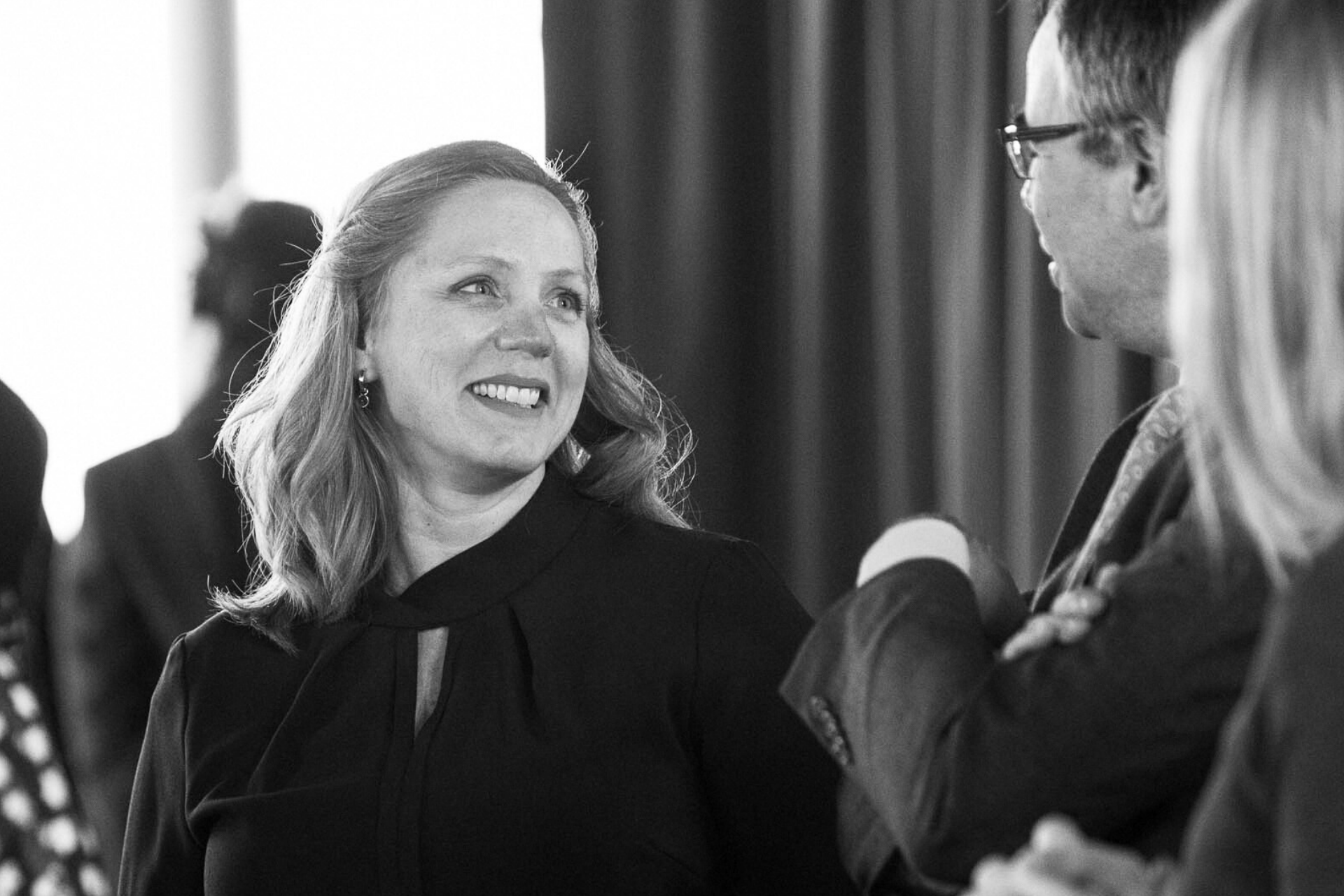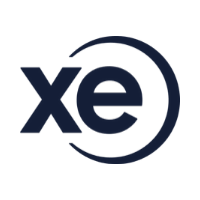| 06-03-2020 | Carlo de Meijer | treasuryXL
A growing number of companies have expressed their will to enter the blockchain arena. But after some number of years in which their focus was mainly on the benefits of blockchain in various areas, in terms of speed, costs, streamline operations and increased efficiency, their attention is now turned to the various challenges and bottlenecks that are preventing widespread adoption. In this blog I will go into more detail in these bottlenecks and how the industry is trying to tackle these.

Main challenges
First of all there is a reputation challenge. Blockchain is still very much connected to the crypto world in the mind of many. And that is seen as a world of bad actors, hackers, frauds and speculators.
But more important are the technical ones such as immaturity (still slow and cumbersome), lack of scalability, lack of interoperability, stand-alone projects, difficult integration with legacy systems, complexity and lack of blockchain talent.
What to think about the organisational challenges at corporates like lack of good governance, lack of awareness and understanding, lack of user experience and education, the attitude of incumbents, or the security and privacy challenges, including lack of regulation. And there is the productivity paradox.
And finally, but not unimportant other challenges such as culture, energy consumption/environmental cost.
Blockchain has an image problem
Blockchain has an image problem. Blockchain is too much linked with cryptocurrencies in the mind of many. Especially crypto has a negative image that is surrounded by fraudsters, hackers that are using he technology for criminal activities. This bad name is reflecting on the blockchain technology system as whole and is making people seriously think twice before adopting it.
Before the general adoption is possible, members of the public must understand the difference between bitcoins, other crypto-currencies, and blockchain. One should understand that cryptocurrencies are only one application of blockchain technology amongst many others. This will help to eliminate the sometimes negative implications and may result in an increased willingness to use the technology. In the meantime a growing number of collaborative initiatives in the blockchain world in various industries have come up to bring wider change. This sort of interdependence may be the key to moving forward.
Corporates are afraid of the disruptive character of blockchain
There are organisations that do not like the idea of blockchain and its disruptive character. For some it is a nightmare thinking they will lose market share or will even become obsolete.
Blockchain is about 80 per cent business process change and 20 per cent technology implementation. It represents a total shift away from the traditional ways of doing things. This even goes for industries that have already seen significant transformation from digital technologies.
It places trust and authority in a decentralised network rather than in a powerful central institution. And for most, this loss of control can be deeply unsettling.
It is still uncertain who will be most affected by blockchain implementations and which areas of the business are likely to be most disrupted. So, a more ‘imaginative’ approach is needed to understand opportunities and also how things will change.
And there are the vested interest of incumbent parties
Existing regulation represents by far the most significant hurdle for blockchain innovators, as ‘existing regulations favour incumbents and their vested interest over disruptors’. The digitisation (of information) process is taking place in a so-called regulatory “heavy” zone. That is not that strange given the long-established authority of governments to protect consumer and property rights.
Blockchain presents new challenges to regulators looking to protect consumers and markets, but the rigidity with which regulators in the world’s major economies have approached blockchain has served to stifle innovation and growth.
But that view is also changing and as soon as also governments and other public organisations are seeing the benefits of this technology and develop a regulatory model that encourages innovation while protecting consumers that might be an eye opener for others.
Blockchain is still an immature technology
Beyond the above described challenges, blockchain faces a number of implementation challenges, that has all to do with the still immature technology.
One major technology challenge of blockchain is related to the technical scalability of the network which can put a strain on the adoption process, especially for public blockchains.
Legacy transaction networks are known for their ability to process thousands of transactions per second. Visa, for example, is capable of processing more than 2000 transactions per second. The two largest blockchain networks, Bitcoin and Ethereum however are far behind when it comes to transaction speeds. While the Bitcoin blockchain can process three to seven transactions per second, Ethereum can handle approximately 20 transactions in a second.
This lack of scalability is not such an issue for private blockchain networks, since the nodes in the network are purposely designed to process transactions in an environment of trusted parties, which makes sense business-wise.
There are some interesting solutions upcoming to tackle the scalability issue. Such as s the Lightning Network, which consists of adding a second layer to the main blockchain network in order to facilitate faster transactions. Another interesting solution is Sharding that groups subsets of nodes into smaller networks or ‘shards’ which are then responsible for the transactions specific to their shard. When offered in conjunction with the proof-of-stake consensus mechanism, has the potential to scale up the application.
- Lack of standardisation: limited interoperability
Another main challenge is the lack of interoperability between the large number of blockchain networks. Over 6,500 projects are leveraging a variety of – mostly standalone – blockchain platforms and solutions with different protocols, coding languages, consensus mechanisms, and privacy measures.
The problem is that with so many different networks, the blockchain space is in a ‘state of disarray’ due to a lack of universal standards that would allow different networks to communicate with each other.
The lack of such uniformity across blockchain protocols also takes away consistency from basic processes like security, making mass adoption an almost impossible task.
The establishment of industry-wide standards with regard to various blockchain protocols could help enterprises collaborate on application development, validate proofs of concept, and share blockchain solutions as well as making it easier to integrate with existing systems.
There are now various projects that offer interoperability among different blockchain networks, such as Ark which uses SmartBridges architecture to address this challenge, and claims to provide universal interoperability, plus cross-blockchain communication and transfers. Another example is Cosmos, which uses the Interblockchain Communication (IBC) protocol to enable blockchain economies to operate outside silos, and transfer files between each other.
- Integration with legacy systems
And there is the challenge for corporates of how to integrate blockchain with their legacy system(s). In most cases, if they decide to use blockchain, organization are required to completely restructure their previous system, or design a way to successfully integrate the two technologies.
One problem is that due to the lack of skilled developers, organizations do not have access to the necessary pool of blockchain talent to engage in this process. Reliance on an external party can soften this problem. But most solutions present on the market require the organization to invest a significant amount of time and resources to complete the transition.
And there are the high incidences of data loss and breach that are discouraging most companies from transitioning to blockchain. Every enterprise is reserved and unwilling to make changes to its database, and for good reasons, as data loss or data corruption constitute major risks.
Recently, new solutions emerged which enable legacy systems to connect to a blockchain backend. One such solution is Modex Blockchain Database, a product designed to help people without a background in technology, access the benefits of blockchain technology and remove the dangers posed by the loss of sensitive data.
- Lack of blockchain developers
While the demand for qualified blockchain staff is increasing dramatically, the blockchain landscape suffers an acute shortage of an adequately trained and skilled /qualified people for developing and managing the complexity of peer-to-peer networks. Blockchain technology however demands additional qualification and know-how.
According to some, the demand for blockchain-related jobs has increased by almost 2000% between 2017 and 2020. Having a sufficient pool of qualified developers is a top industry concern.
Blockchain technology is still in its infancy and is still evolving. It requires time for the developer community to adopt it, and for educational institutions to introduce relevant blockchain-related courses. Though this will alleviate the market demand, the results however will become palpable only after students will finish their training and that will take some time. .
- Blockchains can be slow and cumbersome
Due to their complexity and their encrypted, distributed nature, blockchain blockchains can be slow and cumbersome. Transactions can take a while to process, certainly compared to “traditional” payment systems such as cash or debit cards.
When the user number increase on the network, the transitions take longer to process. It can take even days to process the whole transaction. As a result, the transactions cost is higher than usual, and this also restricts more users on the network.
In theory the principle extends to blockchain networks which are used for something other than as a store of value (for example logging transactions or interactions in and IoT environment). This is a problem which could be solved with advances in engineering and processing speeds, but that will take some time.
Organisational challenges
And there are various organisational challenges that are limiting the use of blockchain technology by corporates.
- Lack of awareness and understanding
The main challenge for corporates associated with blockchain, especially the small and medium ones, is a lack of awareness of the technology and a widespread lack of understanding of how it works. Many companies do not understand what blockchain is or what they can do. This has a lot to do with the dominance of technicians in the blockchain area and their too much technology approach.
This is hampering investment and the exploration of ideas. Instead a much more business oriented approach is very much needed. This asks for improving the user experience for those not as technically minded. Organisations really must educate themselves about this emerging technology. They should increase their level of understanding at all levels. This asks for better educational campaigns to make all this knowledge more accessible.
And there is the so-called blockchain paradox. The speed and effectiveness with which blockchain networks can execute peer-to-peer transactions comes at a high aggregate cost, which is greater for some types of blockchain than others. This inefficiency arises because each node performs the same tasks as every other node on its own copy of the data in an attempt to be the first to find a solution.
Therefore, decisions of corporates about implementing blockchain applications need to be carefully thought through. The returns to individual processing may diminish as the network grows in size. This means that blockchain applications must harness network effects to deliver value to consumers or to sectors at large.
The blockchain creates most value for organisations when they work together on areas of ‘shared pain or shared opportunity’. The problem with many current approaches, though, is that they stand alone: organisations are developing their own blockchains and applications to run on top of them.
In any one industry sector, many different chains are therefore being developed by many different organisations to many different standards. This defeats the purpose of distributed ledgers, fails to harness network effects and can be less efficient than current approaches.
A positive developments is however the rise of so called blockchain consortia, aimed to tackle industry wide issues, including standards, critical mass etc.
- Security and privacy challenges
And what to think about the various security and privacy challenges. While cryptocurrencies offer pseudonymity, many potential applications of the blockchain require smart transactions and contracts to be indisputably linked to known identities, and thus raise important questions about privacy and of the security of the data stored and accessible on the shared ledger.
Many companies nowadays work with privacy rules governed by regulation. Their consumers trust them with sensitive information. But if this information is all stored in a public ledger it won’t actually be private anymore. Private or consortia blockchain could work here. You would get limited access, and all your sensitive information would stay private as it should.
Security is another crucial topic here. However, only a handful of scenarios have good protocols that can cope with this. While blockchains are more secure than traditional computer systems, hackers can still breach apps, systems, and businesses built on blockchains.
The solution is not just government protection of privacy. Self-sovereign identities on blockchain will enable us to capture and control our own data. While there is a lot of work on several privacy protocols such as proof of zero knowledge to overcome these obstacles and good identity initiatives are underway (Sovrin), we are still a long way from a radically new identity framework.
- Lack of regulatory clarity and good governance
There is also the lack of regulatory clarity regarding the underlying blockchain technology, which is a significant roadblock for mass adoption. Regulations have always struggled to keep up with advances in technology. This is also the case with blockchain. One of the challenges of the blockchain approach (which was also one of its original motivations) is that it reduces oversight.
Many organizations are making blockchain technology as a means of transaction. But even now there aren’t any specific regulations about it. So, no one follows any specific rules when it comes to the blockchain, so there is still no security.
There are certain areas that require regulatory support, such as the earlier mentioned smart contracts. If the regulations do not cover smart contracts, it inhibits adoption as well as investment in the blockchain industry.
Centralised systems, particularly in financial services, also “act as shock absorbers in times of crisis” despite their challenges and bottlenecks. Decentralised networks can be much less resilient to shocks, which can impact participants directly, unless careful thought is given to their design.
There is thus a strong argument for blockchain applications to work within existing regulatory structures not outside of them. To get over this challenges, Government and extremely controlled sectors may need to create regulations for blockchain. But this means that regulators in all industries have to understand the technology and its impact on the businesses and consumers in their sector.
Other challenges
- Blockchain has an environmental cost
And finally but not least important the huge energy consumption is another blockchain adoption challenge. The majority of blockchains present in the market consume a high amount of energy.
Most of the blockchain technology follow bitcoins infrastructure and use Proof of Proof-of-work (PoW) as consensus mechanism for validating transactions. These protocols require users to solve complex mathematical puzzles, and require tremendous computing power to verify and process transactions and to secure the network.
In the meantime the amount of energy consumed by computers that compete to solve the mathematical puzzle has reached an all-time high. Some estimate that Bitcoin transaction energy consumption could soar as high as the yearly electricity usage of Denmark in 2020. Add to this the energy needed to cool down the computers, and the costs increase exponentially.
To overcome this issue, many blockchain proponents are developing more efficient consensus algorithms, that are less energy taxing. So-called proof-of-stake (PoS) protocols were introduced, that involve a combination of a participant’s stake in the network and an algorithm to randomly assign the task of validation to a node. Given that the participants are not required to solve complex puzzles, these mechanisms significantly reduce energy consumption.
Furthermore, from a business perspective, private blockchains are more suitable to serve company interests, as they provide restricted access, an additional layer of privacy to protect trade secrets, and are more energy-efficient.
Forward looking
In general, technological advancements take a long time to mature and reach a stable form that can be introduced into the market. Like any technological innovation, blockchain will follow the same, slow trajectory of adoption over the coming years. Although there are many possibilities, it will still take some time to get rid of all the challenges and use it to get all the benefits of it.
The list of Blockchain adoption challenges mentioned above clearly underlines the need for technological improvements. And the industry is very busy solving them. If we can fix these and remove the various bottlenecks, things will surely become more comfortable and trigger mass adoption.

Carlo de Meijer
Economist and researcher
 Kendra Keydeniers
Kendra Keydeniers


















